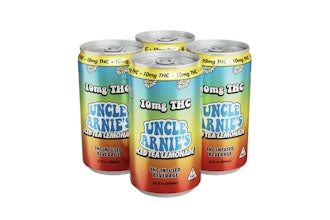
Here in my home state of California, we have, for the past few years, enjoyed a high supply of cannabis coming into the marketplace. We aren’t alone - many other states are producing more legal weed than they can consume. While overproduction can cause a host of negative issues, there is at least one positive: it has given the industry room to develop different products and methods for delivering cannabis to consumers.
From flower to edibles and from tinctures to topicals, consumers have no shortage of choice when it comes to cannabis products. One line that has been gaining popularity among cannabis connoisseurs is live resin or live rosin. In fact, in 2021 alone, live resin vape sales grew by 87% in the United States and a whopping 626% in Canada according to the North American Vape Market report. It could be gaining increased attention because it is more pure and less refined than other options, such as distillates. Generally speaking, these products contain more terpenes and are more rare in the marketplace. They are also significantly more expensive.
Many of these formulas are made up of a pure cannabis product that is not decarboxylated. In very simple terms, decarboxylation (or decarbing) is generally used to “activate” the desired psychoactive effects of cannabis. To do this, cannabis is heated up to create a chemical change that transforms the original cannabis plant by releasing THC. Most live resins and rosins, along with other products such as waxes, hash rosins, RSOs and shatters, are not decarbed and do not undergo this process.
Discerning cannabis consumers may choose to smoke or vape these types of products. When material like this is heated up in a vaporizer device, it is heated and decarboxylated to access the THC. In the case of vaping live resins and rosins, what many don’t know is that the process for filling the vape cartridges is extremely delicate - or at least it should be. This type of product is more difficult to fill because the integrity and quality of the product must be maintained at every stage during the filling process.
Harry Rose of Rosette Wellness described the process of dealing with something that is not distillate such as resin or rosin, as basically dealing with a plant, full of inconsistencies. “It’s ‘alive’, so the slightest manipulation can create issues. Filling machines that allow granular control can mitigate any potential volatility during the filling process. When you have the ability to make adjustments to exactly match the needs of the product you are using, each strain, you can dial everything in and minimize risk when it comes to the quality of the end product.”
When filling vape cartridges with these kinds of products, the process needs to be precisely controlled. When some manufacturers fill vape cartridges with the more common distillates, they can be heated up to 200 degrees F, causing lowered viscosity for fast filling. Processing solventless rosin, and achieving the consistency and viscosity needed to fill a cartridge, is a balancing act. You must avoid damaging the terpenes or degrading the cannabinoid profile, or it will not have the expected end result for the consumer - a consumer that is very aware of terpene content, flavor and desired effect.
Artisanal live resins and rosins can not only be damaged by high temperatures, but also by any vacuum introduced in the filling machine dispense system. Filling machines must allow a high level of control over the entire dispensing system parameters that will allow operators to mitigate any potential actions that might damage the product. For example, when the product enters the dispense system, draw time must be adjusted to the exact viscosity of the material so that the material maintains contact with the dispense piston. This can help eliminate atmospheric change in the barrel, avoiding undesired chemical changes in the material that are irreversible.
We spoke with award-winning live rosin expert Ben McCabe to help expand on this topic. He said, “When you apply a vacuum you lower the boiling point, materials will actually heat up more at lower temperatures. So the faster you can get the product from its bulk state into a cartridge, avoiding complexity in the process, the better it's going to be. Without the right process and equipment, you risk it degrading very quickly or easily. Especially when it comes to solventless, because the product itself is much much more fragile than distillate would be.”
The best approach to filling vape cartridges with live resins and rosins is very nuanced, and little understood in the general marketplace, but critical in maintaining the quality and value of these higher-end cannabis products in a vape filling operation. And, for companies trying to meet increased consumer demand for these types of vape products, they must have a reliable, repeatable and automated process and fit-for-purpose equipment for efficiently getting these products to market.
Cannabis is growing up and so are its consumers. They want products that are more pure, contain natural cannabis terpenes, and provide the desired effects. Demand for concentrates like live resins and rosins is skyrocketing, and vape manufacturers need to keep up with cartridge filling machines that will retain the integrity of these products.






















